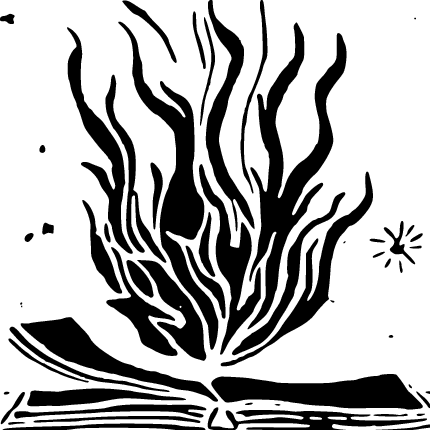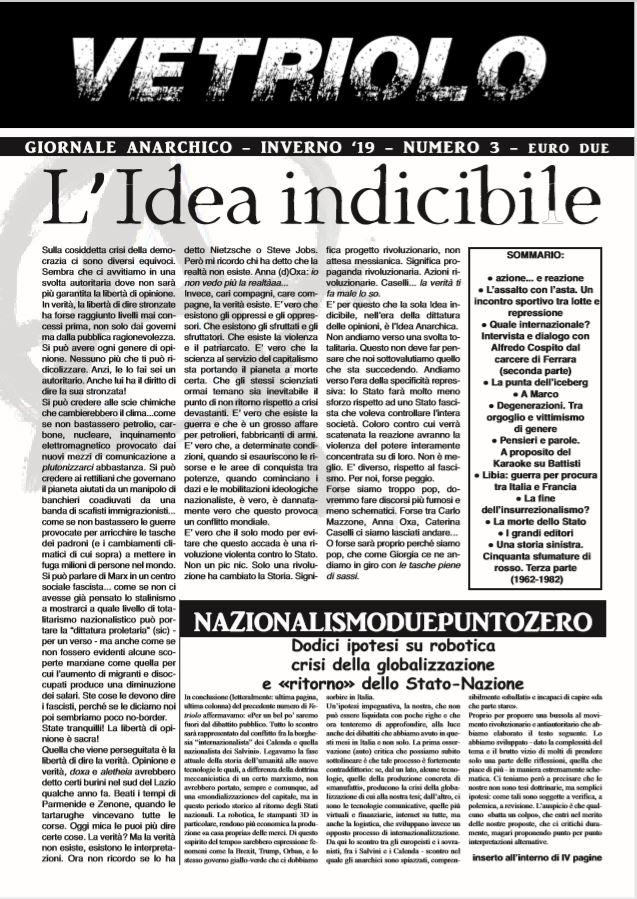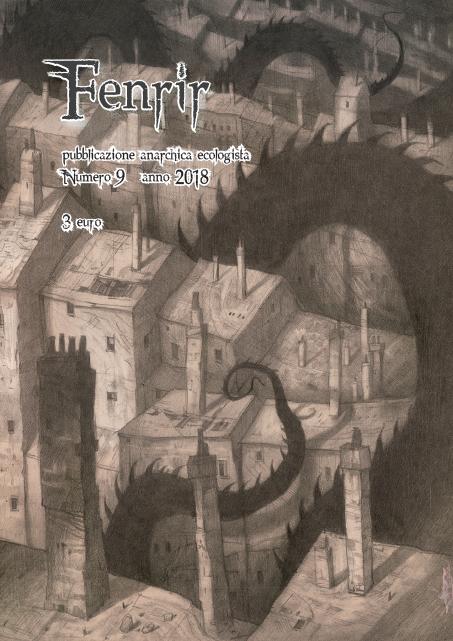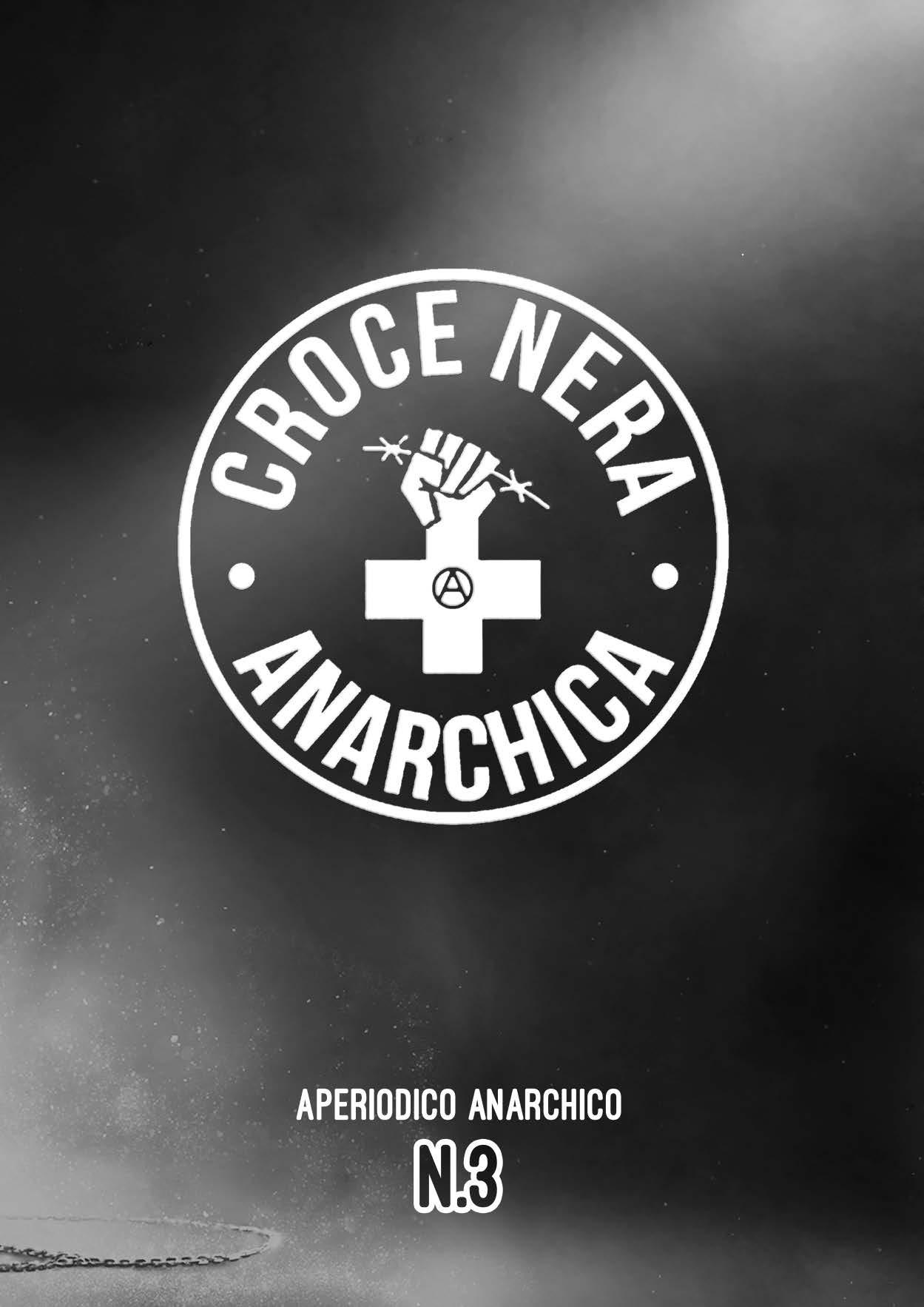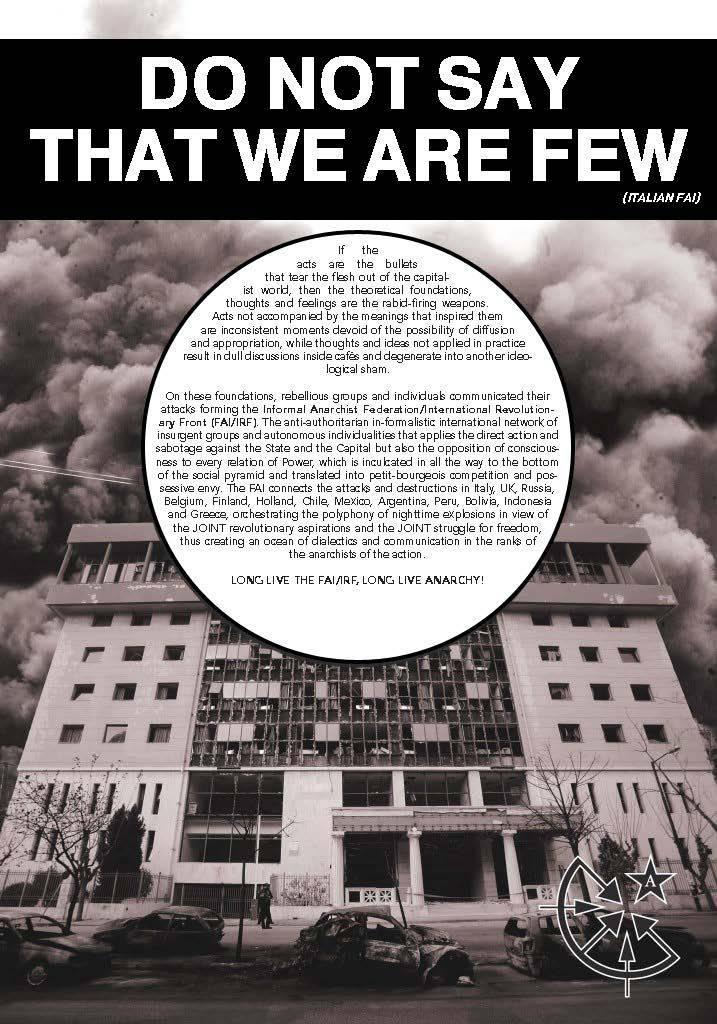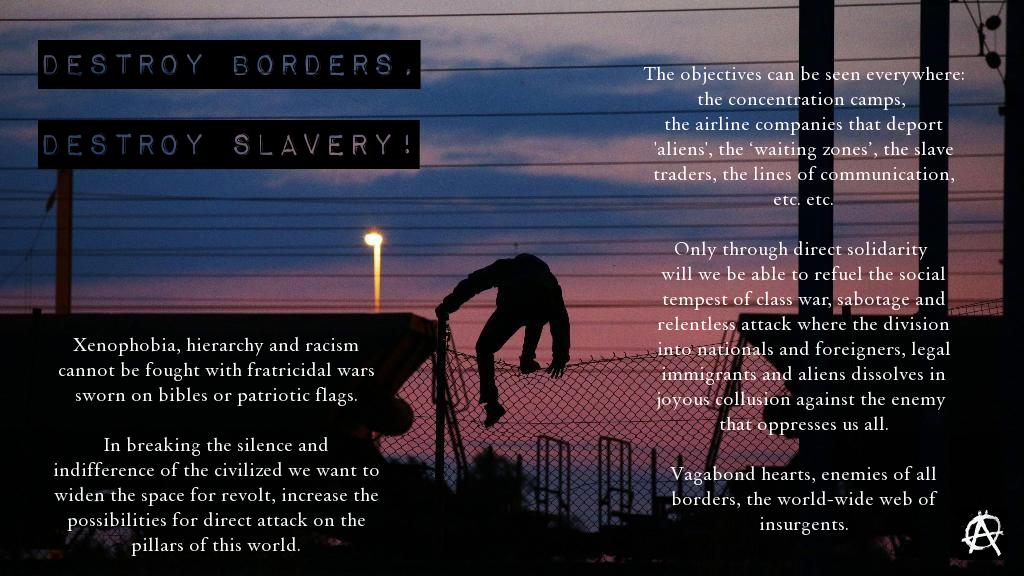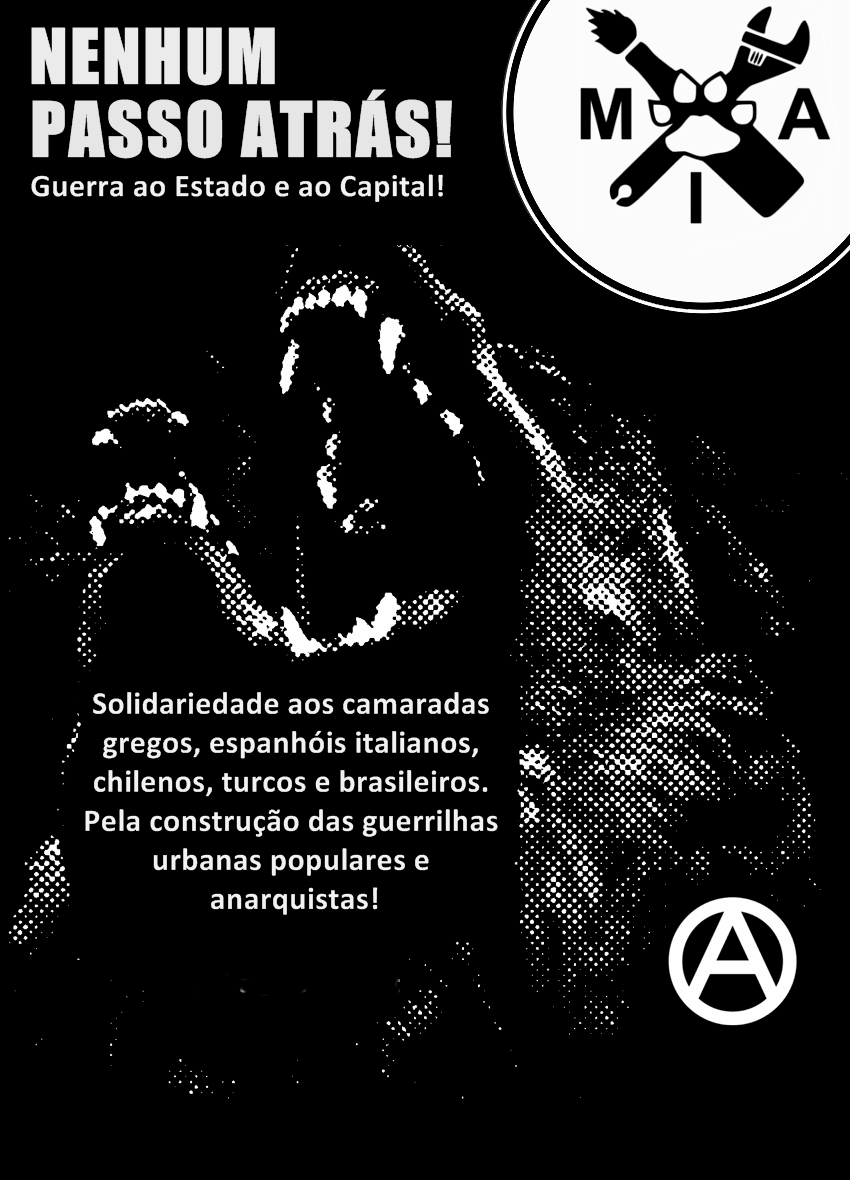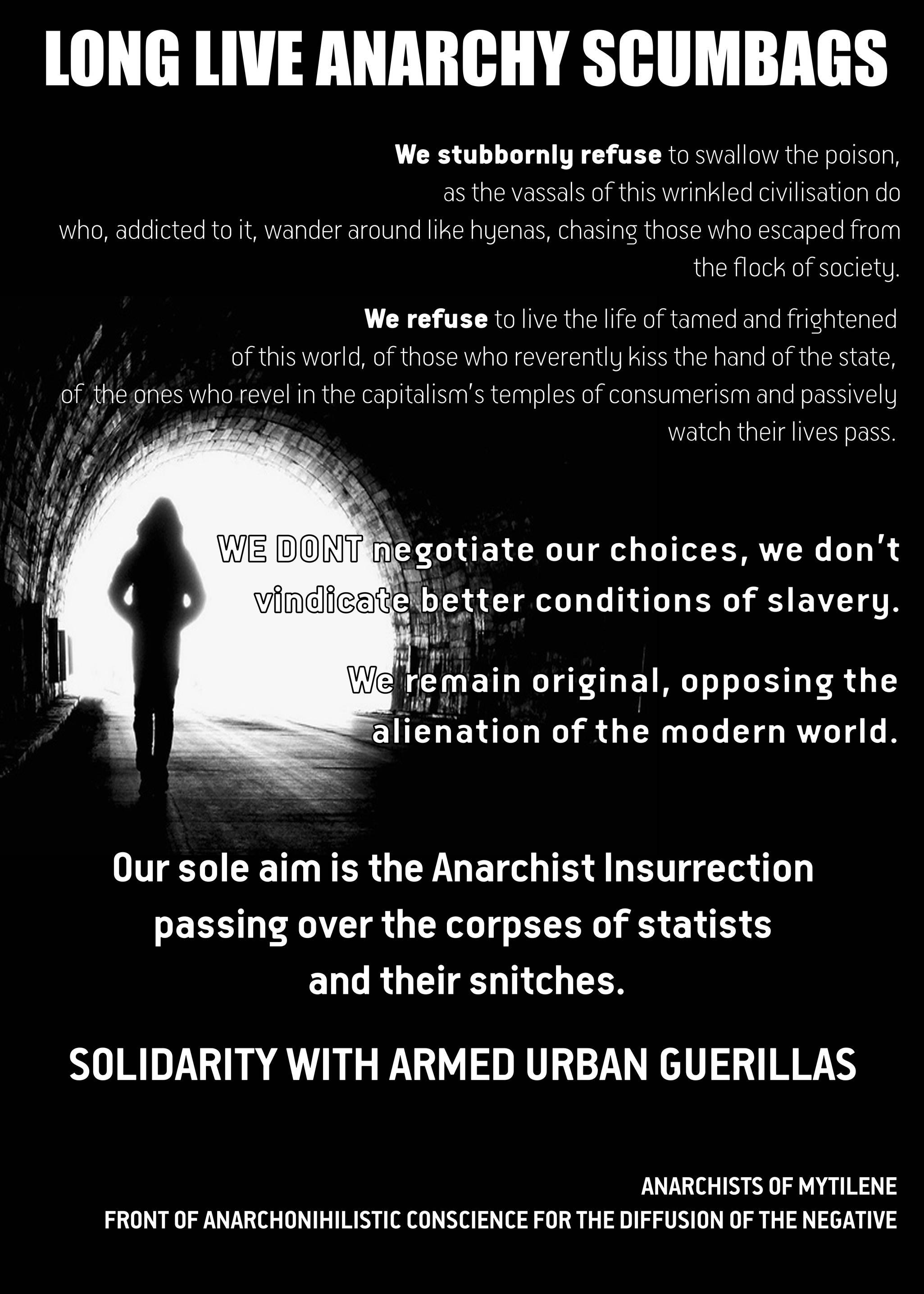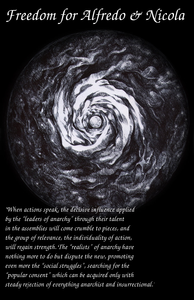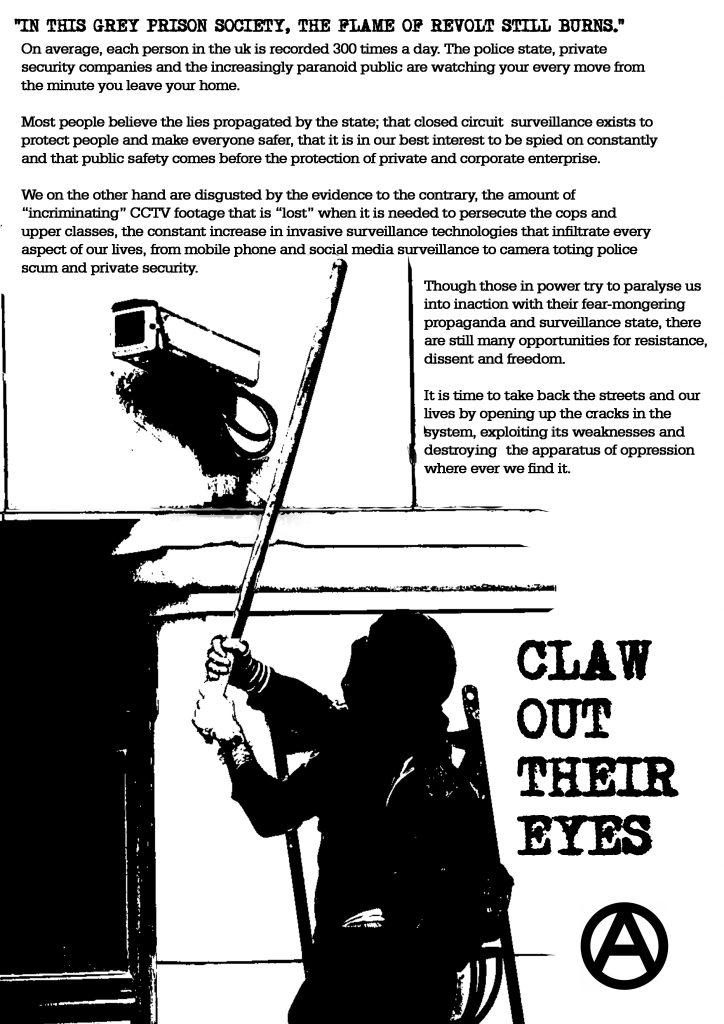Italy: April-July , 2018 reports on the “Scripta Manent” trial

After the hearing of winter 2018, mainly reports on specific alleged facts against the accused and the outline of the accusatory scheme on the crime of association according to the Digos of Turin, from 8th April to 16th May some ROS officers from Perugia – Rossi, Mencarelli, Simeon, Mariucci, Passeri – paraded themselves, some of whom are still in service there, others transferred to similar offices elsewhere in the country, to relate on the ‘Ardire’ investigation, later included in Scripta Manent, with digressions and providential amnesia on other investigations and files connected to anti-anarchist monitoring activity starting from so called operation Brushwood to operation Shadow, mainly through telematic, telephone, environmental interceptions and control of letters.
Mencarelli exposed his analysis on the blog Culmine and on relations between anarchists mainly through letters to and from prison: ‘yes, but I can’t produce any actual data’ could be the symbolic sentence of his statement as he was trying to attribute participation in another paper to an editor of Culmine; or ‘they knew each other because of their hatred of Benetton’ as he had to demonstrate that two defendants knew each other, that is to say both had been investigated for participating in initiatives against the Treviso landowners in solidarity with the Mapuche people.
Simeon described Ardire as ‘derivation’ of Shadow, following the monitoring of comrades on remand for the preceding operation carried out by Perugia ROS/public prosecutor Comodi through controls on letters and audio-video recordings in the visiting hall of the prison of Alessandria, drawing special attention to the anarchist prisoners’ hunger strike in memory of Mauricio Morales in 2009 and to the actions claimed by Sisters in Arms – FAI of the same period against the Bocconi university and other targets.
The ROS carabinieri officer practically reiterated the accusatory thesis of Ardire, with the well-worn model of the double level, skipping over the fact that this thesis had already failed miserably with the Ardire prison releases, in respect to both article 270bis and the specific charges and the filing away by Milan prosecutors (with whom the same Perugia ROS had collaborated after the jurisdiction was moved from Perugia to Milano) and also passing over the final sentence of operation Shadow (where the charge of association was dropped in the first grade trial whereas the charge of instigation was proposed again at the appeal trial and confirmed by the court of cassation).
Still in May, the Turin Digos officer Di Gregoli continuing to expose charges that anyone can read by surfing the web, that is to say by ‘consulting open sources’, gave an overview on the number of attacks carried out by FAI/FRI in Italy, 52 according to open sources, and a larger number abroad taken from a map published in various international counter-information sites.
He went on to expose the controls exercised on the series of meetings ‘Heads Held High’ and on the successive editors of Croce Nera Anarchica – described as a ‘magazine of the association’, a ‘means of communication of the association’ – on the blog and prisoners’ fund and also on the editors’ movements and acquaintances.
At the end of May the ROS officers Moriconi, Corradetti, Panebianco and D’Enrico of Naples exposed the ‘fruit’ of their monitoring activity on anarchist milieus from 2012, in particular operations Evolution and Evolution II, and passing over other investigations that the same office was inflicting on anarchist comrades in the Campania region. As usual they dwelt on web counter-information and relations of solidarity with prisoners: communication via email, publication of news, communiques and claims, interspersed with detailed reports on ‘significant’ events such as … concerts and benefit T-shirt printing, presentations of meetings and a litany of anarchists’ names, be they defendants or not, and the relations between the latter.
The narration of insignificant daily episodes (very similar between ROS and Digos) is mixed with sparks of genius such as that of considering it particularly significant to declare ‘solidarity and complicity’ instead of a more traditional ‘solidarity’ or that of hypothesizing an anarchist ‘horizontal compartmentation’ instead of a ‘vertical compartmentation’ in Red Brigades-style.
The same report contains the modalities of telematic interceptions used against RadioAzione – blog and web radio – with trojan, introduced through ADSL, software renamed Agent Elena with their cop imagination. A laptop becomes an environmental microchip to intercept off-air comments during radio live recordings (with also the judges’ authorization to make video recordings when the portable webcam was activated) and to allow the acquisition of emails, editorial activity and image searches through keylogger (software that can record everything being tapped on a keyboard) and snapshot (screen photos in succession) in closed time progression in order to give account of additions and corrections at short intervals.
In June the Pescara Digos officer Palazzo related his presence, the duration and frequentations of the defendants in Pescara in August 2012 (on the beach, in bars, at a fun park), on trips, relations and presence at the Adinolfi trial again through stalking backed by environmental microphones and cameras placed outside house and workplace entrances so as to put relations already known about for years under the magnifying glass, occasional acquaintances, presentations and distributions of CNA (of which, strangely, the Turin Digos say they didn’t get the editors’ telematic interceptions).
At the 4th July hearing, the lab technician responsible for graphic analysis of the Parma’s RIS, Orienti, was summoned to confirm the technical report written at the time of the events concerning hand-written labels and stencilled texts of the incendiary/explosive parcels in Chiamparino, Coema and Torino Cronaca: this report states that according to the examination the hand-writing derives from tracing and therefore, just like pencil writing, cannot be attributed to anyone, which contradicts the prosecutors’ ostentatious graphic experts’ reports.
At the 5th July hearing an IT expert summoned by defence lawyers explained the way of functioning of networks, sub-networks and search engines and the consequent modalities and possibilities of acquiring internet documents after a lapse of time. This contradicted the arbitrary attributions and reconstructions of the prosecutors, several years later.
Still on 5th July a geneticist consultant for the defence highlighted the endless irregularities, gaps and errors in the reports drawn up in 2005 and 2012 on DNA traces found on the handles of a bag containing the unexploded device against Parma RIS in 2005: mainly a mixed, contaminated and scant DNA trace found in 2005, subsequently gathered and concentrated following a lab procedure considered no longer reliable and with tests that cannot be repeated because the trace found at the time was consumed in the first examination; errors that were also detected in a later examination in 2012 on the reliability of examination instruments: ‘if you can’t use software properly it will tell you what you want to hear’, the consultant declared in order to explain the adaptability of data input.
The court demanded a fresh DNA examination, which will be conferred on 12th September, when the trial starts again in the autumn.
* The pieces in inverted comas are quotations from transcripts.
Translated by act for freedom now!

